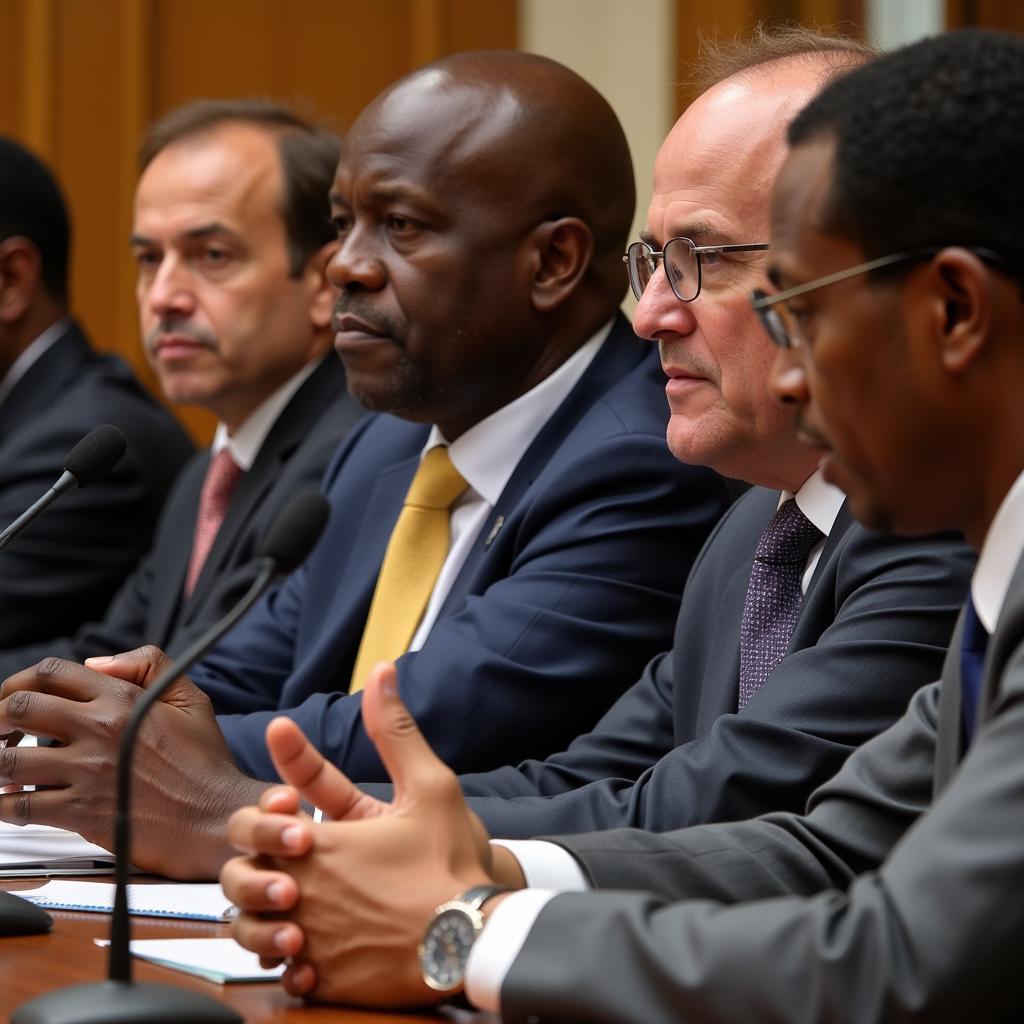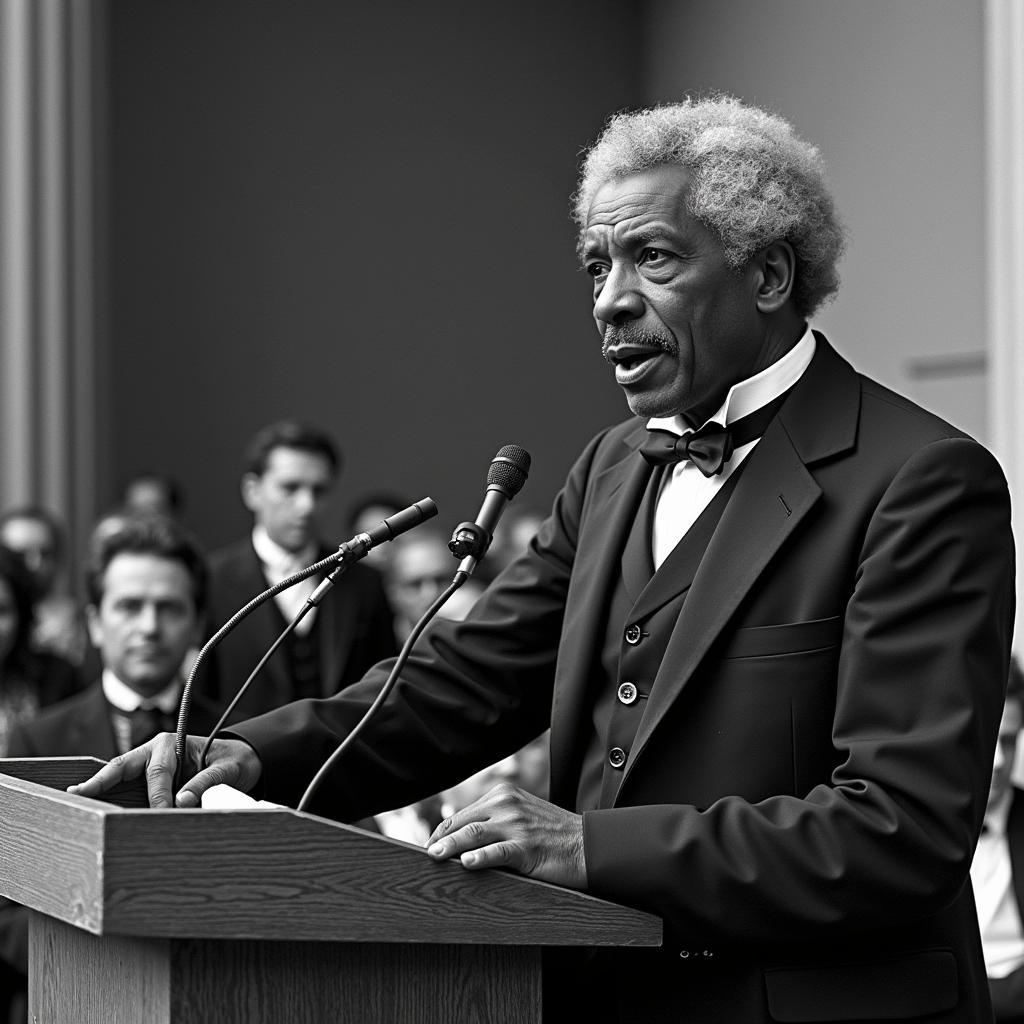The Evolution of African American Drama in the 20th Century
The 20th century witnessed a seismic shift in the landscape of American theater, largely propelled by the emergence and evolution of African American drama. This period saw Black playwrights grapple with themes of identity, racism, migration, and hope, crafting powerful narratives that reflected the evolving sociopolitical realities of Black Americans.
From Minstrelsy to the Harlem Renaissance: Finding a Voice
The early 20th century saw African American drama emerge from the shadow of minstrelsy, a racist form of entertainment that often mocked and stereotyped Black people. Playwrights like William Wells Brown and Pauline Hopkins challenged these harmful representations, paving the way for more authentic portrayals of Black life.
The Harlem Renaissance, a cultural explosion in the 1920s, proved to be a watershed moment for 20th century African american drama. This era gave rise to iconic figures like Langston Hughes, Zora Neale Hurston, and Georgia Douglas Johnson, who used their art to celebrate Black culture and challenge racial prejudice. Plays like Hughes’ “Mulatto” and Hurston’s “Mule Bone” explored complex themes of race, class, and identity with unprecedented honesty and depth.
Protest and Progress: Mid-Century African American Drama
Following the Harlem Renaissance, African American drama continued to evolve, reflecting the burgeoning Civil Rights Movement and the ongoing struggle for equality. Playwrights like Lorraine Hansberry and James Baldwin used their platforms to expose the realities of racism and segregation, sparking critical conversations about social justice.
Hansberry’s groundbreaking play, “A Raisin in the Sun”, which premiered in 1959, offered a poignant portrayal of a Black family’s struggle for dignity and opportunity in a racially segregated Chicago. The play’s success marked a turning point, demonstrating the immense power of Black stories to resonate with audiences of all backgrounds. Baldwin’s work, including plays like “Blues for Mister Charlie” and “The Amen Corner”, often explored themes of racial identity, sexuality, and the complexities of Black life in America.
New Voices, New Visions: Late 20th Century and Beyond
The late 20th century saw a continued flourishing of African American drama, with playwrights exploring a wider range of themes and styles. August Wilson, perhaps the most celebrated Black playwright of this era, crafted a cycle of ten plays, each set in a different decade, chronicling the Black experience in 20th century America. His work, which includes masterpieces like “Fences,” “The Piano Lesson,” and “Ma Rainey’s Black Bottom,” delved into the complexities of family, history, and the enduring legacy of slavery.
This period also witnessed the rise of important voices like Suzan-Lori Parks, whose experimental play “Topdog/Underdog” earned her the Pulitzer Prize for Drama in 2002. Other notable playwrights, including Ntozake Shange, Anna Deavere Smith, and George C. Wolfe, expanded the boundaries of African American theater, experimenting with form, language, and genre to tell their stories.
The Legacy of 20th Century African American Drama
The impact of 20th century African American drama extends far beyond the stage. These plays have not only entertained but also educated, challenged, and inspired generations of audiences. They have sparked important conversations about race, identity, and social justice, leaving an indelible mark on American theater and culture. From the groundbreaking works of the Harlem Renaissance to the powerful dramas of the Civil Rights era and beyond, African American playwrights have used their voices to tell stories that resonate deeply with the human experience.
Frequently Asked Questions:
1. What were some of the major themes explored in 20th century African American drama?
Many themes were explored, including:
- Racism and Discrimination: The realities of segregation, prejudice, and systemic racism were central.
- Identity: Plays grappled with questions of what it meant to be Black in America.
- Migration: The Great Migration, African American migration after the Civil War, from the South to the North had a significant presence.
- Family and Community: The importance of family, community, and shared history were often explored.
- Hope and Resilience: Despite adversity, themes of hope, resilience, and the power of the human spirit were prevalent.
2. Who were some of the most influential figures in 20th century African American drama?
Key figures include:
- Langston Hughes
- Zora Neale Hurston
- Lorraine Hansberry
- James Baldwin
- August Wilson
- Suzan-Lori Parks
3. What were some of the key historical events that shaped the development of 20th century African American drama?
Events like the Harlem Renaissance, the Civil Rights Movement, and ongoing struggles for social justice had a profound impact on the themes and styles of the era’s plays.
4. What is the legacy of 20th century African American drama?
The legacy is one of giving a voice to the marginalized, challenging societal norms, and enriching American theater. These plays continue to be studied, performed, and celebrated for their artistic merit and their social and cultural significance.
5. Where can I find more information about this topic?
You can explore websites and resources dedicated to theater history, African American literature, and the specific playwrights and plays mentioned. University libraries, online databases, and scholarly journals are also excellent sources of information.
Explore More About African and African American Culture:
Need help exploring the fascinating world of African culture?
Contact us at:
Phone: +255768904061
Email: kaka.mag@gmail.com
Address: Mbarali DC Mawindi, Kangaga, Tanzania.
Our dedicated customer service team is available 24/7 to assist you.





